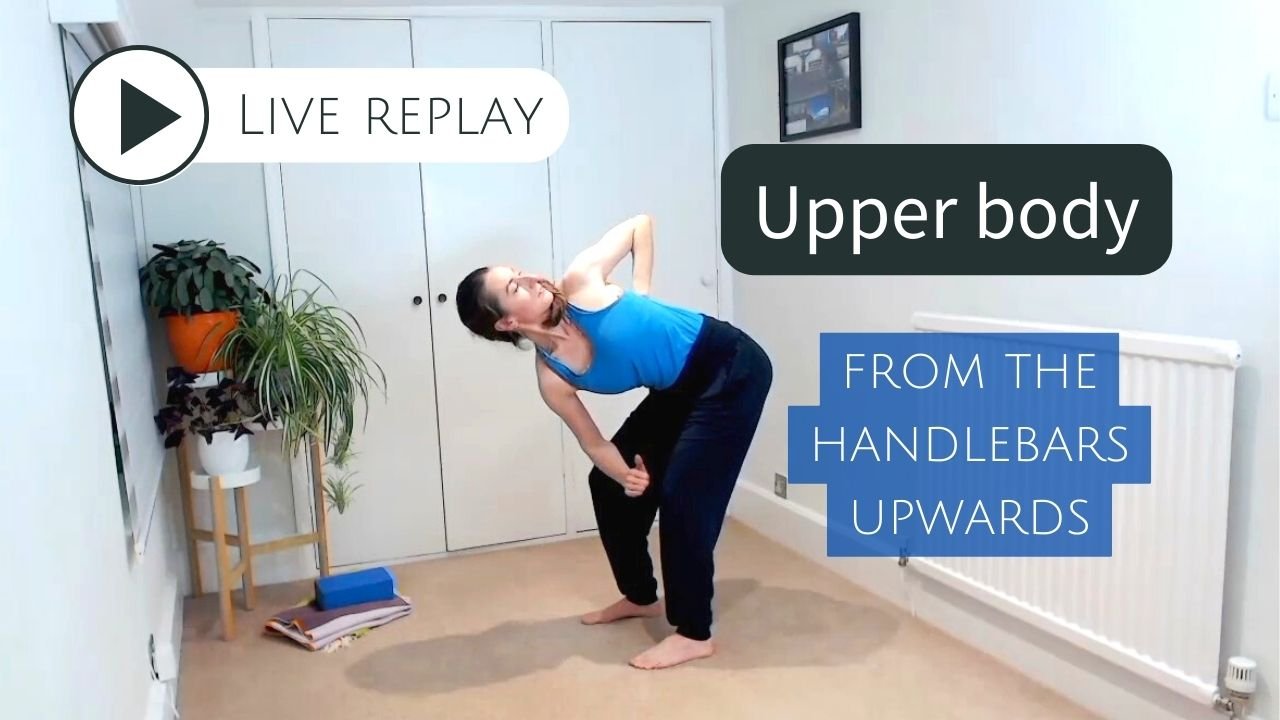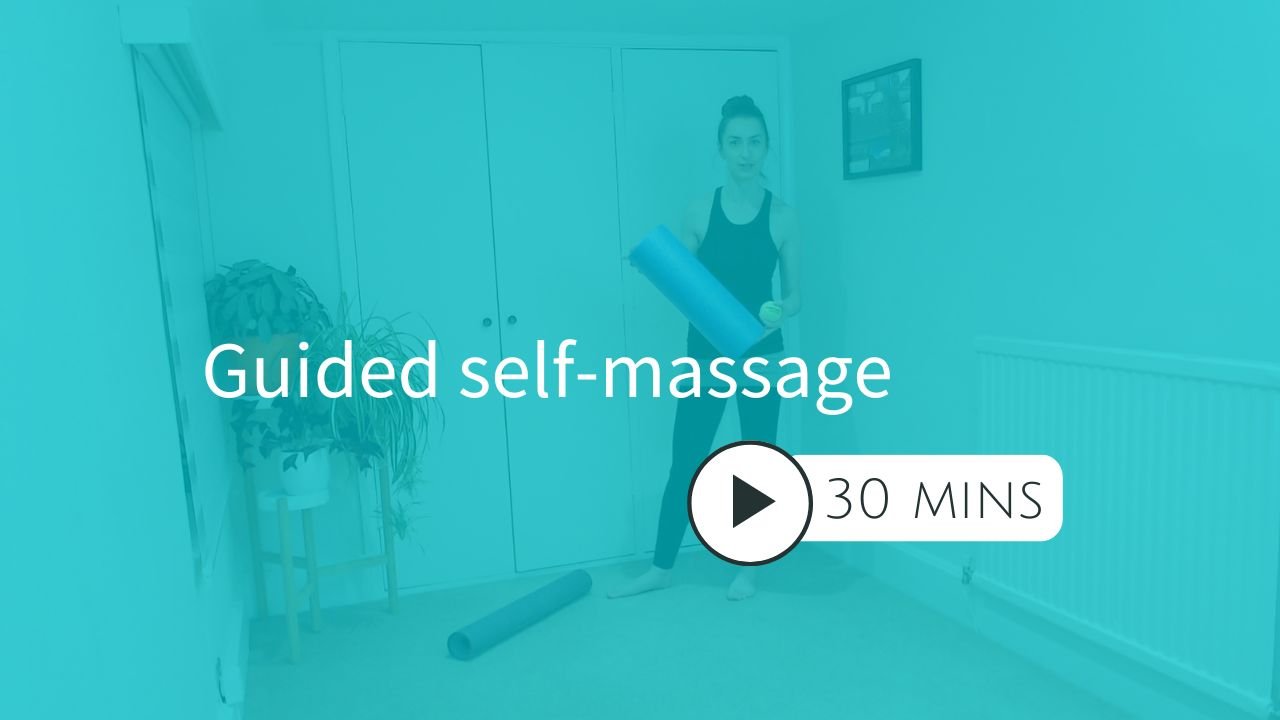Yoga for Cyclists Online Course
guided by 3 key concepts
1. Cycling is a repetitive, low-load, and short range of movement activity.
2. Muscles recover faster than the nervous system.
3. Exercise is only one type of ‘movement’ and ‘fitness’ is not the same as ‘exercise’.
This course won’t teach you that…
touching your toes will make you a better person.
you need to start stretching before and after each ride.
you need to do yoga every single day.
You will learn ways to:
start improving balance, strength, and mobility at home (outside of a gym environment).
prioritise rest, promote recovery, and avoid overtraining: you can record these sessions on Strava, but they will be free from the tyranny of chasing a faster average speed.
enjoy moving your ‘off the bike’ body with fewer rules and more freedom.
“Becci has a calm self-deprecating humour that makes the classes much more natural and down-to-earth than other live/video classes I've done… I've been a regular runner and cyclist for years, and I find the classes a great complementary workout as well as [for] relaxation.”
- Ian H.
Enjoy moving your ‘off the bike’ body with fewer rules and more freedom. This course will help you learn ways to prioritise rest, promote recovery, improve balance, and build strength.
What makes this course specifically ‘for cyclists’?
1. Cycling is a repetitive, low-load, and short range of movement activity.
If cycling is your predominant activity, you will spend a lot of time sat in a saddle turning the pedals: no surprises there!
Your torso will spend a lot of time in a rounded (flexed) position.
Your pelvis and all the soft and sensitive tissue there (our good bits!) will spend a lot of time pressing down on (and being supported by) a saddle.
Your hands move around, but ultimately rest on the handlebars.
Depending on cadence, your knees and ankles will repeat the same set of movements up to 100 times every minute.
Unless something disastrous occurs, the movements we make when cycling mostly happen in a forwards direction (although it might not always feel that way if we’re struggling uphill).
'Short range of movement' means that your muscles move in ways that are smaller than the bigger positions they are capable of.
You can think of 'low load' as 'not moving against much weight'.
When you spend a lot of time cycling there is simply less opportunity for your body to bear weight, develop strength, and improve (or maintain) mobility, and balance in a wider range of positions and activities.
This course is focused on increasing your variety of movement in a way that complements the activity you love.
2. Muscles recover faster than the nervous system.
Getting strong requires a lot of rest. You might be superb at sticking to your training schedule, but find yourself unable to slow down, play, and relax.
This course will help you move between structured training and less structured (‘creative’) physical movement so you can replenish your ‘off the bike’ kit and start to hone in on the tools that help you recover: no fads, quick fixes, or unsolicited advice.
3. Exercise is only one type of ‘movement’ and ‘fitness’ is not the same as ‘exercise’.
You might excel at riding really fast, but struggle to put your socks on in the morning. Cycling is a part of life, not the whole of life (although I know some of you reading this may feel differently).
I’m halfway through this course now, and really enjoying it… It’s all a new/different way for me to think more consciously about movement, balance, and stretching. Have never paid much attention before, and now wondering why I hadn’t..!
- Andy L.
The course
You will learn to move differently – and confidently – with the aim of feeling more comfortable living your every day life and riding your bike.
There are 8 classes to move along with at your own pace: you will have access to 5 replays from classes that were live-streamed in 2022, plus 3 shorter pre-recorded classes.
I know what being a ‘cyclist’ means
I learned to ride a bike just in time to earn a cycling proficiency badge at primary school and didn’t touch a bike again until my mid-twenties when I moved to Oxford, UK. I started commuting and joined a wonderful cycling club (the Cowley Road Condors) where I have run versions of this course for its club members since 2015.
I’ve tried my hand at racing. I’ve broken my collarbone. At my pre-pandemic peak (before the ‘oh look, life has now gone sideways’ trough), I cycled the final 7 stages of the Tour de France 2019: that’s 730+ miles (or 1175+ km) over an elevation profile 4.3x the height of Everest.
From 2019–22, I coordinated Oxford’s cycle campaign (Cyclox) for active travel and safe cycling infrastructure.
I moved to cycling heaven – The Netherlands – in 2022.
“I have never joined a live class, but I have done loads of your recordings… Thank you for all you have done to help me get stronger and more flexible. Thank you also for being a cycling role model and for helping me to broaden my thinking about what is possible to achieve on a bike!”
- Lucy. H. W.
Your access fee includes:
6 hours of cyclist-specific classes
5 x live class replays:
Lower body
Whole-body ‘core’
Upper body
Rest and recovery
Bodyweight strength
3 x short pre-recorded classes:
15 min post-ride routine
30 min guided self-massage
30 min balance on and off the bike
Enjoy moving your ‘off the bike’ body with fewer rules and more freedom. This course will help you learn ways to prioritise rest, promote recovery, improve balance, and build strength.
Prefer to join live classes and have access to a wider range of recorded classes? You can get access to the ‘Yoga for Cyclists’ course plus weekly classes and a comprehensive class library by joining the full class membership.











